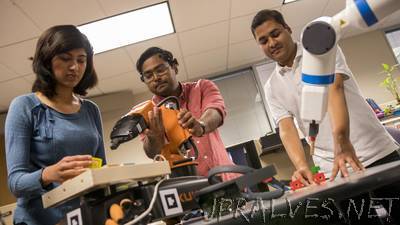
“An ASU-led project that makes it easier for humans and robots to communicate is among the contenders for a spot in an international competition widely considered as the “Olympics of Technology.” Three doctoral candidates in computer science at Arizona State University’s Ira A. Fulton Schools of Engineering constitute Æffective Robotics, one of 12 teams that will compete next week in Seattle in the U.S. finals of the 2017 Microsoft Imagine Cup. They’re vying for a spot in the top six, which would earn them a place in the international finals in Seattle in July, where they would go for the top prize of $100,000, plus support to launch a start-up. Each year, about 350,000 students from more than 170 countries and regions enter the competition, including about 3,000 students at colleges and universities in the U.S. After several months of work on the project they’ve titled “Cloudy with a Chance of Synergy,” the Æffective Robotics members say that they’re confident. Tathagata Chakraborti, Anagha Kulkarni and Sarath Sreedharan will be presenting a concept — along with software — for the operations of a “factory of the future,” in which robots and humans would be connected through a networking system enabling them to effectively “share a brain.” The humans and robots would not actually be reading each other’s minds, Chakraborti said. But they would have technology that provides platforms for a “mutually understood vocabulary” and for “intention recognition and projection,” allowing everyone and everything connected to the network to anticipate each other’s physical movements and high-level goals and to comprehend the intentions and motivations behind those movements.”
